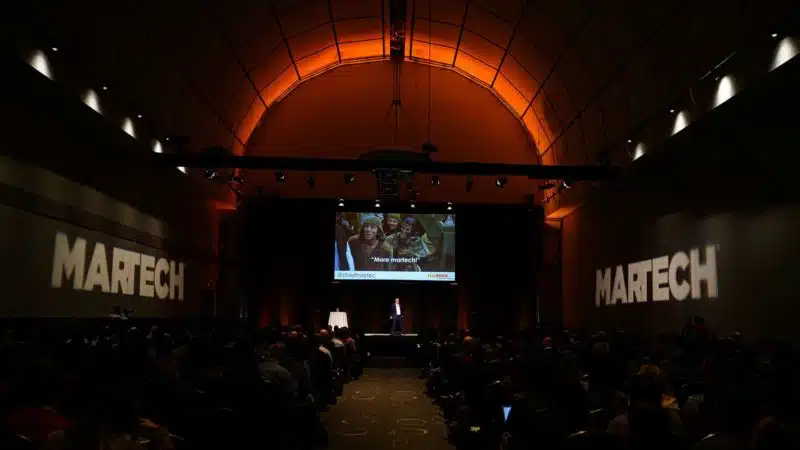How to implement new marketing technology to drive innovation
Results-oriented transformation comes with challenges.
“Leading companies will win digitally by continually innovating brand experiences that drive transformative results,” said Dave Mankowski, Chief Growth Officer for CX software company Bounteous, at our recent MarTech conference.
Many of these digital wins don’t come easy though. In Mankowski’s experience, he sees that innovation often comes slower than expected. Signs of a slow transformation can be seen even in the retail industry overall, where only 20% of retail is done digitally through ecommerce.
Both challenges to innovation and opportunities to advance it do exist within the organizational structure, however, and it’s up to marketers to understand the key drivers to get a transformational win.
“You can get transformational results by doing things better — by unlocking the potential that already exists within the enterprise,” said Mankowski.
Mistakes to avoid with marketing technology
“It’s not that companies are moving too early at this point, and it’s not because there’s not great potential for results,” Mankowski explained.
When a company has decided to invest in new technology, for example, failure or success can hinge on avoiding the following mistakes.
Not asking the right questions. Businesses need to get critical insights from their technology, so marketers should be armed with the right questions. For instance, “90% of companies are investing in marketing AI, but very few are seeing the results that they would hope for,” said Mankowski.
It’s not enough to implement a new tool in the stack. Marketers need to make sure the new tech is yielding results in the form of insights and performance.
One and done. “No one really says they’re taking a one and done approach to digital transformation, but often even with a road map, it just ends up being a series of discrete actions and more or less plays out as a kind of one and done effort,” Mankowski said.
A key part of implementation is making sure that the new tech works with other tools in the stack. Transformation occurs when marketers ride this momentum and continue to innovate with additional tools and capabilities.
Not organizing around innovation. Marketing, marketing ops teams and IT members are the organizational center of marketing innovation.
If they really don’t organize around the new technology and the goal to innovate, momentum is lost, said Mankowski.
“You have to know your talent and certain team structures and methods to really drive those interactions among the teams to really win digitally,” he added.

Activating customer data
Marketing technology innovation also depends on the activation of data throughout the organization. Here are the main approaches to making sure that activation takes place in your business.
Strategy. Just because innovation sometimes stalls out on the organizational roadmap doesn’t mean that an organization shouldn’t pay close attention to the strategy required in implementing new tools.
“We’ve got to think about the business objectives and develop a roadmap that prioritizes those appropriately and drives a solution design that ultimately will achieve them,” said Jonathan Weber, VP, Data Strategy and Activation for Bounteous.
Data. Your innovation will be impacted not just by the existing customer data you have, but even more so by the data you could have, Weber suggested.
What matters is how you collect that data, how you assemble it, ultimately into some unified profile of your customers, and also how you manage the governance and compliance around that, he added.
Insights. It starts with simple reporting and dashboarding, according to Weber, and develops from there into complex analysis and prediction.
Likely, your team will be looking at using machine learning models and AI solutions to achieve these kinds of analytical insights.
Experience. “This is using those insights to create audiences and apply them to the activation channels,” Weber said.
Most importantly in the innovation process, make sure that your organization is clear about what solutions and goals they want to achieve with the new technology, then ask the hard questions about which technology is the right one to meet that goal.
Related stories